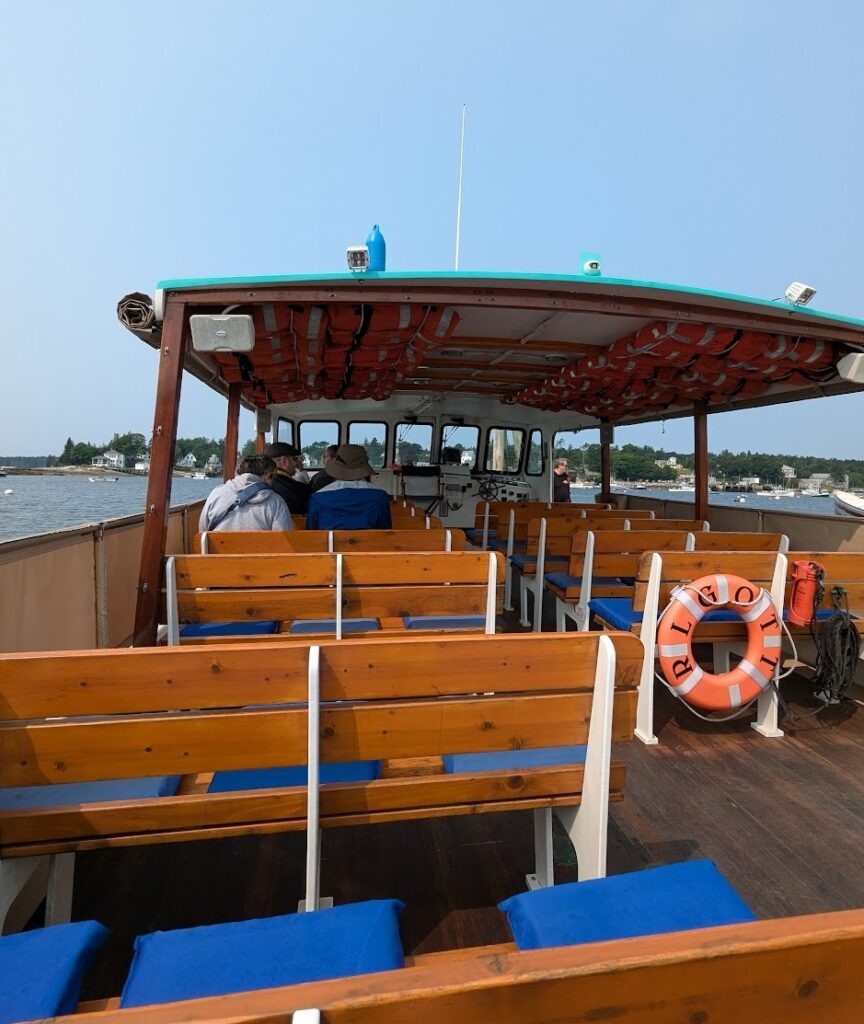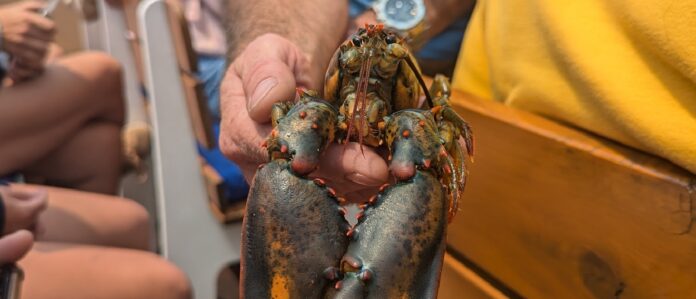I took an awesome lobster boat tour this last summer, and I knew I wanted to include a write-up of the fascinating fishing communities of Maine.
“The Evolution of the Maine Lobster V-Notch Practice” Excerpt Paraphrased by Erin Shaw
The v-notch program helps make lobster fishing the most sustainable fishing practice in America. When fishermen pull a female lobster which is egg-bearing, they use a tool to notch a “v” in the tail. This signals to other fishermen that this lobster is to be returned if caught as notched lobsters can not be sold. This is a voluntary practice that helps conserve the breeding stocks of lobsters. V-notching helps not only individuals but the entire community in terms of future catches. They were willing to reward those who v-notched with esteem and increased reputation (Acheson & Gardner, 2011).
This article discusses the three reasons that fishermen may participate in this voluntary practice. They have developed a strong belief that it is effective in conserving lobster stock, the long-term gains are higher than one-time gain, and an increase in reputation (Acheson & Gardner, 2011).
What’s interesting is that fishermen incur the cost of time and there is no certainty of personal payoff. No one is on the boat to guarantee a fisherman is participating in the process. What factors allow this practice to continue despite this? If a high percentage of the population cooperates, others will follow, if only a few cooperate, then less will cooperate to avoid being “a sucker.” It’s important to engage in the practice when the benefits of cooperating are higher than the benefits of staying with a poor-quality practice. They are contributing because of personal commitment rather than a fear of punishment. The article discusses the relationship to this and the prisoner’s dilemma, stating that in a prisoner’s dilemma, two factors can induce cooperation, one is altruism and the other is reciprocity. The unique aspect of the lobster fishing business is that it deals with indirect reciprocity, or 3rd party altruism, which refers to a situation where there is no necessary reward for the people who help others (Acheson & Gardner, 2011).
.


.
REVIEW
I was inspired by a boat tour I took while in Maine in mid-August that discussed this business model that lobster fishermen use. It was in Bass Harbor in Maine and was led by a man who had lived in the small fishing town his whole life. I was fascinated by the collaboration of humans and knew I wanted to incorporate this model into my capstone project. I am interested in motivating indirect reciprocity in individuals who go to parks in relation to waste management. The fact that this dilemma surrounds sustainability, is even more intriguing as fishing is not always seen as a sustainable practice. By managing laws and having volunteered practices like v-notching, the lobster fishing industry is even more healthy than before. Through physical proof of improvement, social norms and reputation, and long-term gains for the entire fishing industry, the lobster community managed the seemingly impossible; collaboration in the benefit of others.
REFERENCES
Acheson, J., & Gardner, R. (2011). The Evolution of the Maine Lobster V-Notch Practice: Cooperation in a Prisoner’s Dilemma Game. Ecology and Society, 16(1). http://www.jstor.org/stable/26268854




